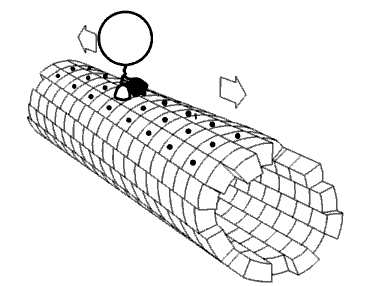
Photo from academic.microsoft.com
Ruthenium-based metal complexes have received considerable interest over the past 30 years for their DNA/RNA-binding and anticancer properties. More recently, however, they have been recognized as potential antibacterial agents. In… Click to show full abstract
Ruthenium-based metal complexes have received considerable interest over the past 30 years for their DNA/RNA-binding and anticancer properties. More recently, however, they have been recognized as potential antibacterial agents. In particular, cationic dinuclear polypyridylruthenium(II) complexes, bridged by flexible methylene linkers, have shown enhanced antibacterial activity over their mononuclear counterparts, and generally maintain activity against antibiotic-resistant strains. Furthermore, dinuclear complexes are known to depolarize and increase permeability of bacterial membranes, while their activity can be directly modulated by varying the length of the methylene bridge.
Journal Title: Biophysical Journal
Year Published: 2017
Link to full text (if available)
Share on Social Media: Sign Up to like & get
recommendations!